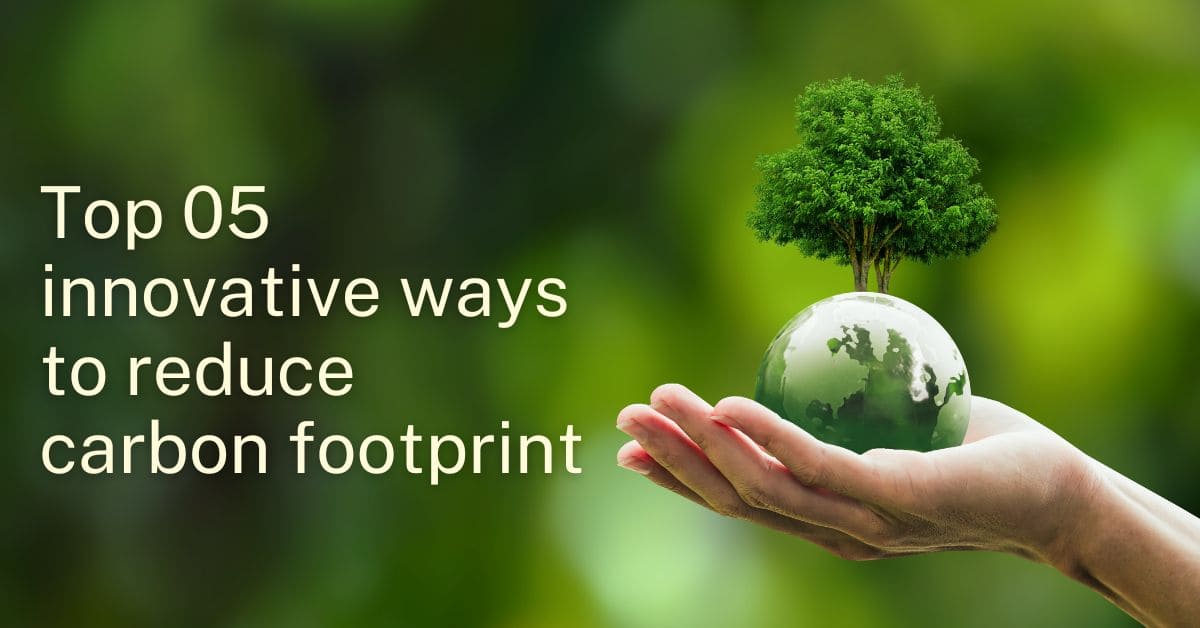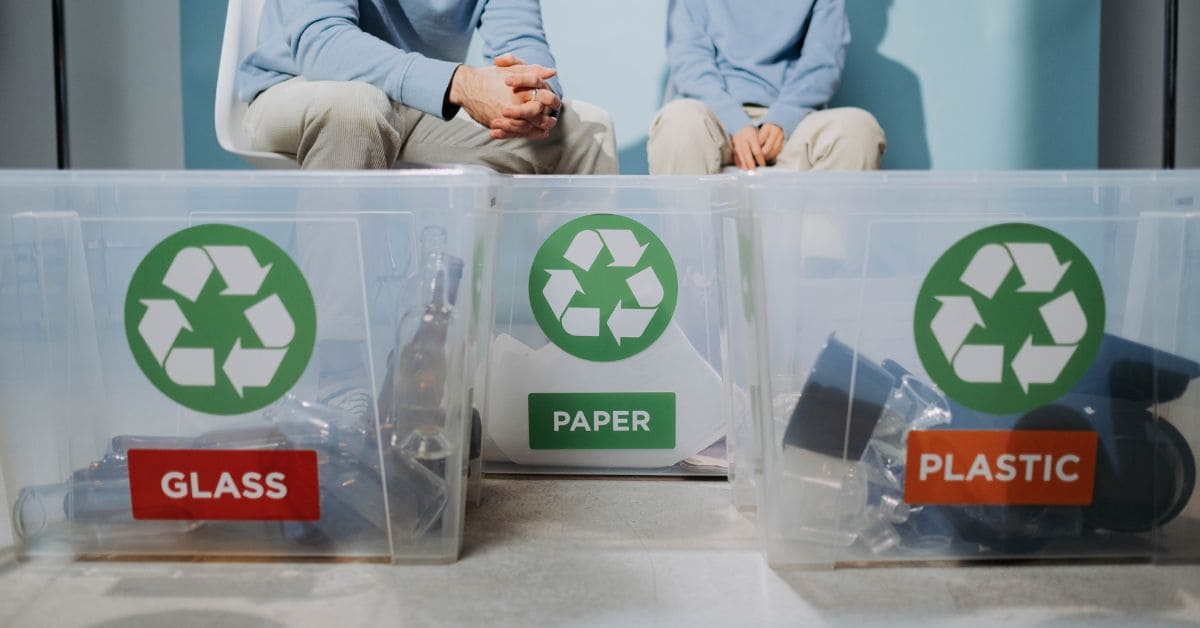Top 05 innovative ways to reduce carbon footprint

In the face of growing concerns about climate change and the need for environmental sustainability, finding innovative ways to reduce our carbon footprint has become increasingly important. By taking proactive measures to lower our carbon emissions, we can contribute to a healthier planet and a more sustainable future.
In this article, we present the top 05 innovative ways to reduce carbon footprint.
The concept of carbon footprint
Carbon footprint is the total amount of greenhouse gas emissions, primarily carbon dioxide (CO2), that are generated directly and indirectly by an individual, organization, or product throughout its lifecycle. Carbon footprint encompasses 2 aspects
Direct carbon footprint: refers to the greenhouse gas emissions that are produced directly from our activities and actions such as burning fossil fuels like gasoline or natural gas for transportation, heating, or electricity
Indirect carbon footprint: refers to the greenhouse gas emissions that are produced as a result of our consumption and lifestyle choices, but not directly under our control. These emissions occur throughout the entire lifecycle of products and services, including their production, transportation, and disposal.
>>>Learn more:Explore 5 facts about carbon footprint
In the next section, we present five innovative ways to reduce carbon footprint
Top 06 innovative ways to reduce carbon footprint
1.Cut off single-use plastic
Reducing our environmental impact and addressing plastic pollution require us to take a crucial step: cutting off single-use plastic. These are the items we use once and throw away, like plastic bags, straws, bottles, and packaging materials. Unfortunately, these plastics often end up in landfills or our oceans, causing harm to animals and ecosystems. 
To make a positive change, we must find alternatives to single-use plastics and prevent them from causing further damage to our planet. You can replace plastics with your own bag, coffee mugs,.... This can contribute to innovative ways to reduce carbon footprint.
Plastic reduction is a pressing concern at present, as it takes center stage as the theme forthis year's Environment Day. The focus on reducing plastic usage reflects the urgency to address the environmental impact caused by excessive plastic consumption.
2.Reduce, reuse and recycle
One of the innovative ways to reduce carbon footprint is practicing 3 key principles “reduce, reuse and recycle” is very significant 
- Reduce: One of the easiest ways to minimize waste is by reducing our consumption. By being mindful of our purchases and focusing on essential items, we can avoid unnecessary waste.
- Reuse: Giving items a second life is an effective way to reduce waste and extend their usefulness. Consider reusing items like shopping bags, glass jars, or plastic containers. These can be used for grocery shopping, storing food, or organizing household items.
- Recycle: Separate recyclable materials, such as paper, plastic, metal, and glass, from general waste and place them in designated recycling bins. These materials are then collected and processed to be transformed into new items. For instance, recycled paper can be used to make new paper products, and recycled plastic can be turned into various plastic goods.
3.Plant trees, join in the volunteer organization

Planting trees and joining environmental volunteer organizations are impactful ways to contribute to innovative ways to reduce carbon footprint. Trees help combat climate change by absorbing carbon dioxide, while volunteer organizations offer opportunities to actively participate in conservation efforts. By planting trees and joining volunteers, we can make a positive impact on the environment, promote sustainability, and inspire others to do the same.
4.Applying a sustainable diet
Applying a sustainable diet is one of the innovative ways to reduce carbon footprint and promote a more environmentally friendly lifestyle.
Increase plant-based foods: Connecting more plant-based foods into our diet, such as fruits, vegetables, legumes, and whole grains, is a sustainable choice. Plant-based foods generally have lower carbon emissions compared to animal-based products. Consider replacing some meat or dairy-based meals with plant-based alternatives.
Choose sustainably sourced proteins: If consuming animal products, opt for sustainably sourced options. Look for labels that indicate organic, free-range, or pasture-raised animal products, as these often have lower environmental impacts. Additionally, consider including plant-based protein sources like tofu, tempeh, lentils, or beans in your meals.
5.Utilize carbon-negative plant-based materials

Choosing plant-based materials is one of the innovative ways to reduce carbon footprint due to their ability to remove or capture carbon dioxide from the atmosphere. Here are the reasons why:
Carbon sequestration: Plant-based materials such as bamboo, hemp, and timber have a remarkable ability to absorb carbon dioxide during photosynthesis. When these materials are responsibly harvested and used in construction, furniture, or packaging, they serve as effective carbon storage, helping to reduce the amount of carbon in the atmosphere.
Carbon storage in products: Carbon-negative plant-based materials can be used to replace carbon-intensive materials like concrete, steel, or plastics. For example, using engineered wood products instead of steel or concrete in construction reduces carbon emissions as wood stores carbon throughout its life cycle. This substitution is contributing to the innovative ways to reduce carbon footprint.
Circular economy potential: Carbon-negative plant-based materials can contribute to a circular economy by being designed for reuse, recycling, or composting at the end of their lifespan.
Bio-based plastics manufacturer
AirX stands out as a brand that goes beyond carbon neutrality by actively removing more carbon dioxide from the atmosphere than it generates. By manufacturing carbon-negative products, AirX demonstrates a commitment to environmental sustainability and offers a solution for reducing carbon emissions associated with traditional products. Our carbon-negative approach sets them apart in the market and showcases our dedication to combating climate change. 
AirX has gained recognition from consumers and industry professionals for its innovative approach to creating sustainable products. The company has partnered with many global corporations such as Paula’s Choice, Roche, Porsche, and more.
Aside from their commitment to sustainability, AirX also values innovation and technology. They constantly invest in research and development to create new and improved products that are both sustainable and technologically advanced.
>>Learn more: The Use of Biobased Materials in Consumer Products for Improved Health and Wellness
Contact us
AirXis the world’s first carbon-negative bio-material made from coffee grounds manufacturer.
We specialize in producing bio-based composites using recycled carbohydrates derived from by-products such as coffee grounds, coconut husk, husk, and bamboo. Our goal is to promote sustainability through the use of eco-friendly materials.
We are always here to help and provide the best service possible. If you have any questions or would like to receive advice and feedback directly from our sales staff, please do not hesitate to contact us. You can reach us through:
- Whatsapp: +84 969 742 950
- Email: [email protected]
We look forward to hearing from you!

